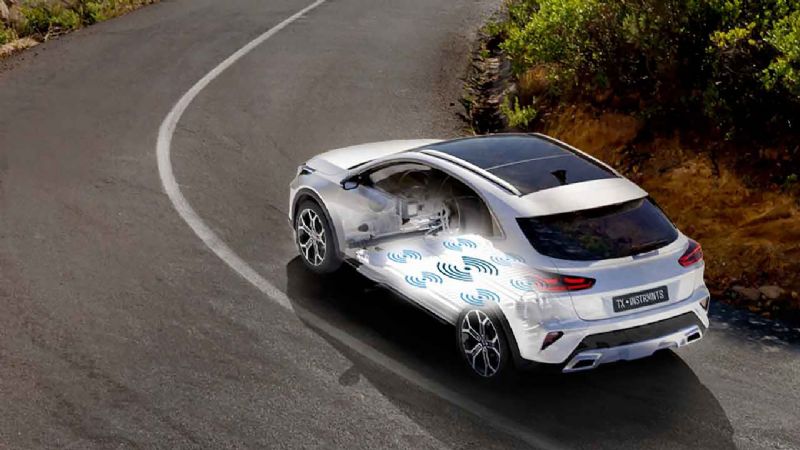Cutting the Cord: EVs Are Moving to Wireless Battery Management

Batteries are fussy. You have to watch them like a hawk when charging or discharging them. Irregular voltage can hasten battery wear at best or trigger a fire or explosion at worst. So circuitry is included to monitor groups of perhaps 16 individual cells. These are currently connected to the main battery monitoring system by twisted pairs of copper wirewhich adds a lot of mass, cost, and opportunity for failure at all these connection points. At CES 2021 , there were two important wireless battery management system announcements: TI Automotive provided in-depth information on its system, and GM announced that the Ultium battery pack set to power the forthcoming GMC Hummer EV , Cadillac Lyriq , and Cadillac Celestiq , as well as future Chevys and Buicks , would feature a wireless battery management system. What Is a Battery Management System? A BMS is an electronic brain that manages a rechargeable battery cell or pack by keeping track of its stateprimarily current, voltage, temperature, and state of chargeand calculating secondary conditional data that is used to control the batterys environment and balance the cells in the pack. Get it all right all of the time, and a battery pack can safely be used for thousands of charge/discharge cycles. Why Use a Wired Battery Management System? First, this is the system we know. This is basically how its always been done, and it offers some benefits. Its contained within the sealed battery pack so its pretty much impossible to hack and therefore highly secure. Wiring easily meets functional safety standards, and the typical twisted-pair ring architecture features built-in redundant cables in both directions. Why Switch to a Wireless Battery Management System? Wireless communication over the 2.4-GHz frequency can reduce the weight of the BMS by anywhere from 75 pounds on a small, shorter-range electric vehicle to 200 pounds on a large long-range one. It also significantly reduces the complexity of the communications network; its smaller footprint increases flexibility in where the systems can be placed in the vehicle. Plus, it's easier to service (cable failures are currently a high warranty-cost item). Wireless communications also eliminate the time delay for information that must propagate all the way up and down the wiring ring, which makes it possible to make time-synchronized measurements across the entire pack, as well as the ability to synchronize the measurement of other qualities. Latency is said to be two milliseconds. Small improvements in voltage and temperature management can extend both the immediate range and ultimate life of a battery. And TI Automotives system is scalable up to 100 nodes, each of which can monitor 16 battery cells. What Are the Drawbacks to a Wireless BMS? An automotive environment can pose radio-frequency interference challenges, and individual sensors that are not within the line of sight of the receiver can pose difficulty for wireless communications. Systems must also be intelligently hardened against hacking and other security breaches, although for the most part, they operate within the battery box. In most cases, this serves as an effective Faraday cage so that BMS communications never interfere with in-cabin cellular or internet WiFi activity. TI Automotive has built its system from scratch for automotive use using its own completely proprietary interface, all optimized for automotive-grade safety concerns. TI Automotive claims its system is the first to earn the highest Automotive Safety Integration Level (ASIL-D), as well as certification from Germanys TV SD. Its communications chips integrate sophisticated noise filters, and security is built into every layer of the solution, with abundant security-key authentication protocols. TI claims its error rate has been measured at 10 -7 , or 0.0000001. And should the system crash, it is programmed to restart within 300 milliseconds. --> When Will Wireless Battery Management Systems Hit the Road? TI Automotive remains tight-lipped as to which OEMs it is working with and will only admit to its system hitting the road within the mid-term. As such, this system could be on the road not long after Analog Devices Incorporated's similar setup appears on the GM Ultium pack in the GMC Hummer EV and Cadillac Lyriq sometime in 2022. The post Cutting the Cord: EVs Are Moving to Wireless Battery Management appeared first on MotorTrend .
http://www.motortrend.com/news/monitoring-battery-health-wirelessly-to-boost-cost-weight-range/




